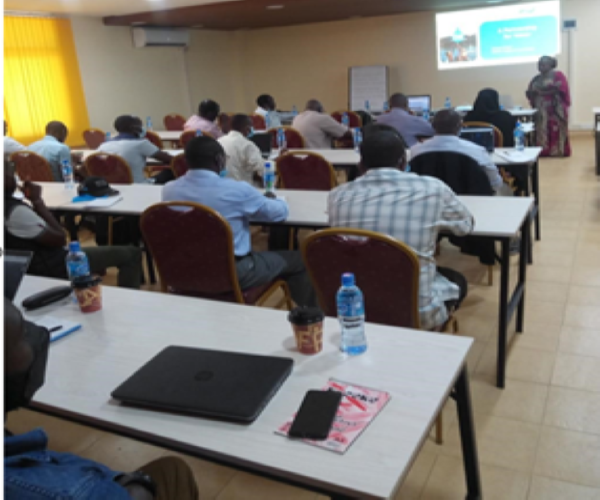The Kenya Water Partnership (KWP) in conjunction with WaterCap recently concluded formulation and adoption of a catchment Action Plan in Kenya. The action planning is part of the pilot project launched by UNEP, GWP and Cap-Net focussing on three target countries (Kenya, Kazakhstan and Argentina). It was required that each of these three target countries identify and prioritize key ecosystems or watersheds and endorse related action plans for protection and restoration. In Kenya, the Ewaso Ng’iro North River Basin was identified as a high priority ecosystem to be restored and protected.
Consequently, several meetings were held to plan and bring together key stakeholders to identify priority areas and actions needed to restore and protect the freshwater ecosystem. This culminated into a two-day Action Planning workshop at Barsalinga Hotel in Isiolo, Kenya from 16th – 17th December 2021 where a draft Action Plan was produced by all stakeholders guided by a consultant. The draft Action Plan was refined through a series of virtual meetings with technical support from Global Water Partnership and UNEP officials. Ultimately, a final Action plan was presented to the stakeholders for validation and adoption. Prior to the development of the action plan, a capacity needs assessment for the water sector, capacity development, awareness raising and training for senior and middle management from key stakeholders, prioritisation of an ecosystem to protect and conserve, were done.
The Action-Planning process brought together key stakeholders; government officials, key mandated institutions, NGOs and local beneficiaries in a participative process of planning and decision-making that strengthened design and contributed to improving capacity from the very beginning. It was observed during the design and could be observed even during implementation, that the action-planning mobilizes commitment and enhances realistic planning among a critical mass of supporters and implementors to achieve the goals of the project. It has been noted that action-planning formulated through workshops, activates and builds teams that can operate within the project, program or policy context to meet the essential conditions for success.
The Action-Planning approach, as opposed to the conventional development planning and implementation techniques, is directed toward improving collective stakeholder capacity to efficiently and effectively plan and manage the implementation of their development strategies. Local ownership of development programs is ensured, effective organizations and teams are created, systems and procedures for implementation are established and management capacities are institutionalized. The action-planning approach encourages management teams at all levels to adapt concepts and tools directly applicable to the program/project or policy setting at hand to make operations more effective and, thus, builds their capacity to be self-reliant and make development programs sustainable.
The priority issues in the Action Plan for the protection and restoration of the Ewaso Ng’iro North River Basin were;
- Strengthening of institutional framework; Improving stakeholders’ engagement and coordination
- Expansion of the basin plan knowledge base through data acquisition for evidence-based decisions
- Enabling Environment to achieve a sustainable balance between the social, economic and environmental needs for water by setting policies, regulations and financing mechanisms
- Support to Multi-agency planning process
- Implementation of priority management actions (Catchment Management; Water Resource Protection; Groundwater management; Water Quality Management)
- Flood and drought management: Nature Based Solutions, green and grey infrastructure development
- Climate change adaptation and preparedness
- Hydrometeorological Monitoring
- Water Resource Development
- Monitoring, Evaluation, Accountability and Learning
